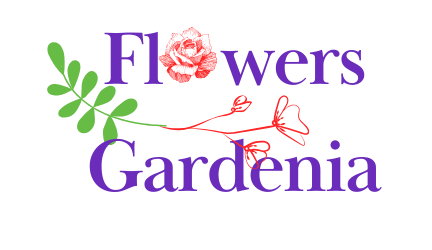
Beautiful flowers gardenia Plants For Your homes

Deer can be a big problem for gardeners. They eat plants and ruin gardens. While no plant is deer-proof, some are less appealing. Deer like big, lush blooms and evergreens.
They prefer plants that are sweet and have lots of water. Hydrangeas, hostas, roses, and daylilies are favorites. But, there are ways to keep deer away from your garden.
Deer don’t like strong-smelling plants. Sages, ornamental salvias, and bee balm are not their favorites. They also avoid plants with fuzzy leaves like lamb’s ear and begonias.
Plants with spines, like globe thistle, keep deer away. Gardeners can use fencing, sprays, and other methods to keep deer out. This includes using essential oils and human hair.
There are many ways to control deer. Fences, sprays, and scare devices work well. By understanding deer behavior, gardeners can keep their gardens safe and beautiful.
To keep your garden safe from deer, it’s important to know their habits. Deer are most active at dawn and dusk. This means you should apply repellents during these times to be most effective.
Deer live in many places, from forests to suburbs. They roam a lot, looking for food. They eat plants, shrubs, and young trees.
In spring and summer, they eat plants rich in nutrients. In fall, they eat more woody plants and acorns to get ready for winter.
Knowing when deer eat certain plants helps you protect your garden. You can plan when to use repellents based on deer eating habits.
Deer like gardens because of the tasty plants. They are attracted to:
To keep deer away, use repellents that smell bad to them. You can make your own with garlic, hot pepper, or eggs. Commercial repellents use scents that scare deer.
Consistency is key when using deer repellents. Regularly monitoring your garden for signs of deer activity and reapplying repellents as needed will help maintain their effectiveness over time.
Understanding deer behavior helps you protect your garden. Know their habitats and what attracts them to gardens. This way, you can keep your landscape safe from deer.
Protecting your garden from deer can be easy with repellent sprays and solutions. I Must Garden Deer Repellent is a top choice, sold in hundreds of stores. It comes in Mint Scent and Spice Scent, both effective and pleasant.
I Must Garden Deer Repellents are safe for the environment and humans. They are free from harmful chemicals. You can choose from various sizes, including sprayers and concentrates, to fit your needs.
Other non-toxic options include Deer Off spray and Plantskydd Animal Repellent. These sprays need to be reapplied after rain to work well.
“I’ve had great success with Liquid Fence, spraying it around the entire perimeter of my yard at the first sign of emerging plants. I follow up with a second application a week later and then monthly after that to keep the deer at bay.”
When using deer repellent sprays, consider a few things:
To keep deer away, make plants unappealing. Deer don’t like the smell of hot sauce, garlic powder, or liquid dish soap. Mint, oregano, sage, and thyme also repel deer naturally.
Scent-based deer repellents are a favorite among gardeners. They use strong smells to keep deer away. Deer have a great sense of smell, thanks to many olfactory receptors.
Homemade deer repellents are eco-friendly and save money. You can make them with common items. For example, a strong egg spray can be made by mixing eggs and water, then letting it sit for 24 hours.
Hot pepper sprays are also effective. The heat from peppers is bad for deer. You can also use ammonia-soaked rags or Irish Spring soap to keep deer away.
Commercial scent repellents are easy to use. Predator urine, like coyote urine, is very effective. It makes deer think there’s a predator nearby.
Deer repellent granules and sprays with bitter tastes are also available. They often have strong smells that deer don’t like. But, you need to apply them often, especially after rain.
When using commercial repellents, follow the instructions carefully. This is important to avoid getting the repellent on yourself. Using scent deterrents is a good way to protect your garden from deer.
Keeping deer away from your garden can be done with auditory and visual deterrents. These methods surprise and scare deer, making them hesitant to enter. Even though deer may get used to scare devices after a week, mixing different types can make them more effective.
Motion-activated sprinklers, like the deer deterrent sprinkler, startle deer with sudden noise and water. They work by releasing a powerful water jet when a deer is detected. These devices can protect up to 4,000 square feet.
People have used these sprinklers to protect their cherry trees and gardens from deer and other animals. Moving the sprinklers often helps keep deer from getting used to them.
Ultrasonic devices, like the Deer Gard, make high-frequency sounds deer find annoying. They can cover up to 4,000 square feet. Motion-activated models are especially good because they only sound off when deer are around.
Users have reported positive results with ultrasonic devices in various locations across the United States, including High Country, AZ, San Pablo, CA, and Kansas City, MO. These devices have successfully deterred deer, geese, and squirrels from gardens and woodland areas.
It’s important to place ultrasonic devices strategically and keep them in good working order. Using them with visual deterrents and repellents can offer better protection for your garden.
Protecting your garden from deer is best done with physical barriers and fencing. Tennessee’s white-tailed deer population is near one million. This makes deer fences a key strategy for many gardeners.
The success of a deer barrier depends on deer density and food sources. Putting up fences early in the season helps a lot. For valuable crops, stronger fences are needed. The City of Ann Arbor finds fencing very effective against deer damage.
Choosing a fence involves thinking about upkeep, visibility, and cost. The usual deer fence is eight feet high and made of wire mesh. But, height and material can change based on deer pressure and garden looks. Plastic fencing might keep away deer if they have other food sources.
Electric fences are more effective than regular ones because they shock deer. Single-strand electric fences can keep deer damage low. Some gardeners use peanut butter on aluminum foil to attract deer and give them a shock. But, electric fences need careful setup and upkeep to work well.
Temporary fencing, like deer netting, is good for protecting certain plants or areas. Tree netting covers young plants and fruit trees to keep deer away. Plastic netting and steel stakes can also act as a temporary barrier. But, watch these barriers closely, as deer might push them down.
Fencing costs differ, but repellent and electric fences are cheaper. An electric fence for 10 acres costs about $170 per 1000 feet. Materials for a repellent fence cost around $200 per 1000 feet. When planning your live flower garden, use deer-resistant plants and fencing to protect them.
To keep deer out of your garden, use a mix of repellents and deterrents. This multi-pronged approach helps adapt to deer behavior changes. It’s key to protecting your garden from deer damage.
Try different methods to find what works best for your garden. Mix scent repellents like Plantskydd with visual deterrents. This combo is more effective than one method alone.
Physical barriers, such as fencing, can also help. Use them with repellents for better protection. This approach is part of integrated deer management.
Deer can get used to certain repellents. Change your methods often to keep them away. Switch between different repellents and physical barriers to keep deer guessing.
For example, use natural repellents like Bobbex, then switch to chemical products like Repellex. Try homemade solutions like hot pepper spray too. This keeps deer from getting used to any one repellent.
Creating a deer-resistant garden is more than just using repellents. It’s about garden design and plant choice. Choose plants deer don’t like, like herbs and plants with prickly leaves.
Group these plants with deer-attractive ones to protect them. Add deer-resistant trees and shrubs around the garden. This keeps deer out of your space.
“At Mohonk Mountain House, we rely on a combination of fencing and repellents as our most effective deer control strategies. For our core garden area, we prefer natural-based repellents, while chemical-based products are used in areas away from main buildings.” – Garden Manager, Mohonk Mountain House
Keep your garden clean and well-maintained. Remove hiding spots and fallen food. This discourages deer from visiting. With these steps, you can manage deer damage and have a beautiful garden.
Effective deer control needs a mix of understanding deer behavior, using repellents, and setting up physical barriers. By combining these methods, gardeners can lessen deer damage. Milorganite, a natural fertilizer, is also a good deer repellent when used around plants. It needs to be reapplied every few months.
Other ways to keep deer away include using contact repellents like DeerPro Ag. It works well for yews and arborvitae. Homemade sprays with cayenne pepper, kelp, and peppermint oil can also keep deer away. Motion-activated sprinklers and ultrasonic devices add extra protection. Fences, 6 to 10 feet high, are a solid barrier against deer.
Keeping gardens safe from deer takes effort and patience. Try different repellents and choose deer-resistant plants like desert cacti. Always stay alert to keep your garden safe. With a well-planned deer control strategy, gardeners can enjoy beautiful, thriving gardens alongside deer.




